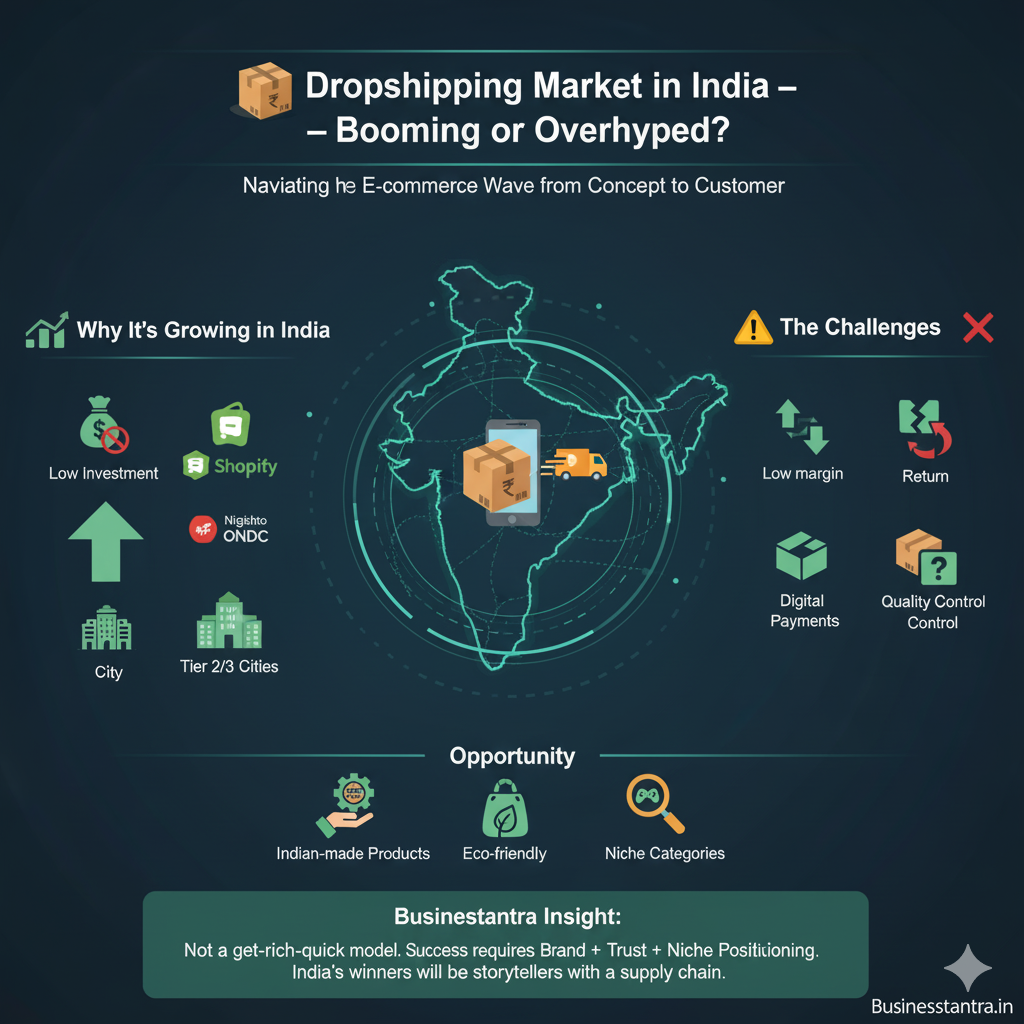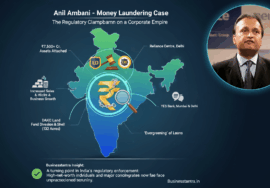The Missing Middle Of Indian Entrepreneurship
[ad_1]
On the flipside of this is a young entrepreneur in Bengaluru. Let’s call him Deepak. He wants to start an internet-based business selling sustainably made agarbathis. He has no trouble getting investors and to mobilise supply chains. His paperwork is over in a matter of days and his business is set up quickly and ready to grow. Never mind that the business is built on aggregation of small sellers who will not see half the profit .
Is this scenario really all that hypothetical or emblematic of how we think about entrepreneurship in India? Between our national obsession with unicorns on one side and glorifying the person running a pakora stall for survival as an example of viable entrepreneurship on the other, is the middle ground in entrepreneurship—a space that should have seen millions of thriving small and medium businesses, but remains so sparsely occupied that you could almost miss it.
If we are to achieve meaningful economic growth in our country, we need to incorporate, in our national conversation on entrepreneurship, ways of addressing the missing middle.
Or call it the mundane middle. Spread out across India’s small towns and cities, this is a class of entrepreneurs that have been hit by a triple wave over the last five years, buffeted first by the inadvertent fallout of demonetization, being unprepared for GST, and then by the endless pain of the covid-19 pandemic. As we finally appear to be reaching some level of normality, now is the opportune time to identify the kind of industries that make up this layer, the opportunities they should be afforded, and the best ways to scale up their functioning in the shortest time frame.
But, why pay so much attention to these industries when we should be celebrating, as we do, our booming startup space? It is indeed true that India has the third largest number of unicorns in the world now, adding 42 in 2021 alone. Braving all the disruptions of the pandemic, it was a year in which Indian startups raised $24.1 billion in equity investments, according to a NASSCOM-Zinnov report last year. However, this is a story of lopsided growth. The cities of Bengaluru, Delhi/NCR, and Mumbai together claim three-fourths of these startup deals while emerging hubs like Ahmedabad, Coimbatore, and Jaipur account for the rest.
This leap in the startup space has created 6.6 lakh direct jobs and a few million indirect jobs. Is that good enough for a country that sends 12 million fresh graduates to its workforce every year? It doesn’t even make a dent on arguably our biggest unemployment in recent history—in April 2020 when the country shutdown to battle covid-19.
Mundane Middle
Technology-intensive start-ups are constrained in their ability to create jobs—and hybrid work models and artificial intelligence (AI) have further accelerated unemployment. What we need to focus on, therefore, is the labour-intensive micro, small and medium enterprise (MSME). Here, we begin to get to a definitional notion of what we called the mundane middle and the problems it currently faces.
India has an estimated 63 million enterprises. But, out of 100 companies, 95 are micro enterprises—employing less than five people, four are small to medium and barely one is large.
The questions to ask are: why are Indian MSMEs failing to grow from micro to small and medium and then be spurred on to make the leap into large companies? What are the policy interventions that can be introduced to improve their access to finance, skilled labour and markets, both physical and online? And then some larger questions: how do we build an environment where there is entrepreneurial drive and aspiration, along with new opportunities to expand into?
A national mission
At the Global Alliance for Mass Entrepreneurship (GAME), we have advocated for a National Mission for Mass Entrepreneurship, the need for which is more pronounced now than ever before. Whenever India has worked to achieve a significant economic milestone in a limited span of time, it has worked best in mission mode. Think of the Green Revolution or Operation Flood.
From across various states, there are enough examples of approaches that work to catalyse mass entrepreneurship. The introduction of entrepreneurship mindset curriculum (EMC) in schools through alliance mode of working by a number of agencies has shown significant improvement in academic and life outcomes. Through creative teaching methods, students are encouraged to inculcate 21st century skills like creativity, problem solving, critical thinking and leadership which are not only foundational for entrepreneurship but essential to thrive in our complex world.
Udhyam Learning Foundation has been involved with the Government of Delhi since 2018 to help young people across over 1,000 schools to develop an entrepreneurial mindset. One pilot programme introduced the concept of ‘seed money’ and saw 41 students turn their ideas into profit-making ventures. Other programmes teach qualities like grit and resourcefulness.
If you think these are isolated examples, consider some larger data trends. The Observer Research Foundation and The World Economic Forum released the Young India and Work: A Survey of Youth Aspirations in 2018. When asked which type of work arrangement they prefer, 49% of the youth surveyed said they prefer a job in the public sector. However, 38% selected self-employment as an entrepreneur as their ideal type of job. The spirit of entrepreneurship is latent and waiting to be unleashed.
EMC works in a variety of classes and across socio-economic backgrounds. The government of Andhra Pradesh has the Entrepreneurial Mindset Curriculum in 6,000 schools and agreements are in place with school systems and Industrial Training Institutes (ITIs) in five more states.
This emphasis on entrepreneurship training at school and college levels has led to the creation of programmes like ‘InUnity Mangaluru’, a four-month project that involves students in finding solutions to the local challenges with the involvement of industry, educational institutions and the entrepreneurial ecosystem. Students with an inclination towards entrepreneurship or problem solving come together to build solutions. Building such networks of youth entrepreneurs is the logical extension of EMC and holds the key to the future.
The same can be said for building networks of successful women entrepreneurs—so crucial when the participation of women in the Indian economy has declined to an abysmal 20%.
The right environment
Towards increasing ease of doing business (EODB), the Punjab government is dramatically reducing the compliance burden on existing firms and make it much easier for new firms to register and start a formal business. This is being done around four principles—rationalizing the number of no-objection certificates; simplifying the process for registration; reducing discretionary powers given to labour inspectors, and decriminalizing low risk offences. It is interesting just how many low risk labour and non labour-related offences carry a possible punishment of a jail term and how much can be achieved easing these punitive measures.
The majority of India’s 63 million firms are informal —fewer than 20% are registered for GST. Research shows that companies that start out as formal enterprises become two-three times more productive than a similar informal business. So why do firms prefer to be informal? In most cases, it’s because of the sheer cost and difficulty of complying with the different regulations.
In Ludhiana, an accelerator programme is being run on the idea that a good pathway for building local entrepreneurial ecosystems is putting a few established mid-size firms in the area on a fast-paced growth trajectory. This cohort of firms is put through an intense six-month process to accelerate their business and as they find success, it creates excitement and inspires local actors—established industrialists and industry bodies, government, banks, and most of all other business owners.
Other problems like delayed payments and access to finance for entrepreneurs may require larger coalitions of stakeholders to solve. There are several credit guarantee schemes in the country, but most need improvement in their design to maximize their reach. There should be a way to get parties together to figure out what is the best way to give a first-time entrepreneur a loan without collateral.
Policy Switches
There are dots to connect, problems to solve. The question is who will do the scaling? We believe that the government is best placed.
The government has the ability to turn on policy switches, bring in capital and take solutions to scale, bringing together academia, industry, solution providers and financial institutions.
And the need to work on an accelerated timeframe to power up small and medium enterprises is urgent. We are losing the manufacturing battle to China where it’s not just the hi-tech equipment like televisions and cell phones that are flooding the market but also humdrum things like festive lights and small toys. Why are these things coming from China? That is because they have fantastic entrepreneurs who are hungry to grow.
This is not to say that we have to play catch up here and deploy a bunch of companies to start manufacturing electronic devices. But there are many other things we can manufacture and be leaders in if we get our companies up to scale. This national mission that we envisage will also have the crucial role of thinking of where the opportunities will be rather than where they are right now, to be a catalyst for sunrise sectors.
Opportunities abound here. Can these new firms that we imagine get into looking at recycling for instance, or, different aspects of managing the waste that is threatening our cities? Sustainable businesses are estimated to be a $50 trillion economy by 2050. Can we specialize in exciting new fields like green buildings and construction, or infrastructure for renewable energy?
Is there an opportunity, similarly, in agri-entrepreneurship? Food is a catastrophe in every part of the world. It’s grown unsustainably, it’s bad for the planet, and it’s highly exploitative of the farmer who basically doesn’t make a living. The way we grow and deliver and consume food has to be reinvented. These ideas are just the tip of the iceberg when it comes to thinking of new industries, new ways of manufacturing and doing business and new selling opportunities to connect to around the world.
Seizing the future
In sum, we believe that now is the time to harmonize all the intent, insights and thought leadership into a framework that inspires concerted action. We now have all the ingredients to create an ecosystem for entrepreneurship to thrive. Solution providers—both in the government and the private sector—are coming up to solve for access to finance and skilling. We have academia and non-profits working as ecosystem enablers providing insights and evidence-based models for growth. We have large private corporations and philanthropic and funding agencies ready to invest.
It should be in the scope of a National Mass Entrepreneurship Mission to bring all of them together to work in mission mode so that the gap between thought leadership and action can finally be bridged.
K.P. Krishnan is honorary research professor at the Centre for Policy Research, and former secretary, ministry of skill development & entrepreneurship, Government of India.
Ravi Venkatesan is the founder of GAME and the chairman of The Global Energy Alliance for People and Planet.
[ad_2]
Source link










